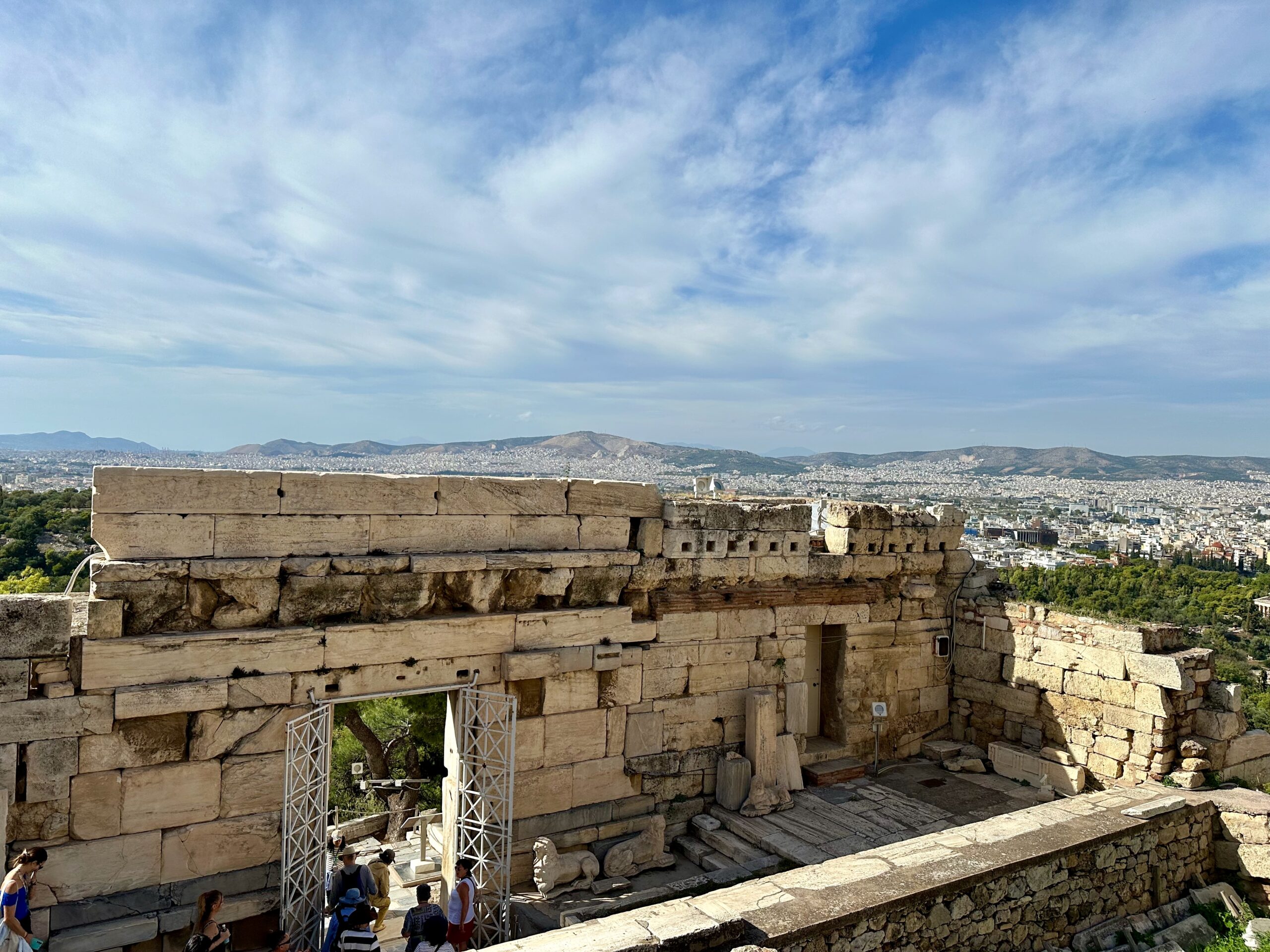A whirlwind 2 days in the ancient city.
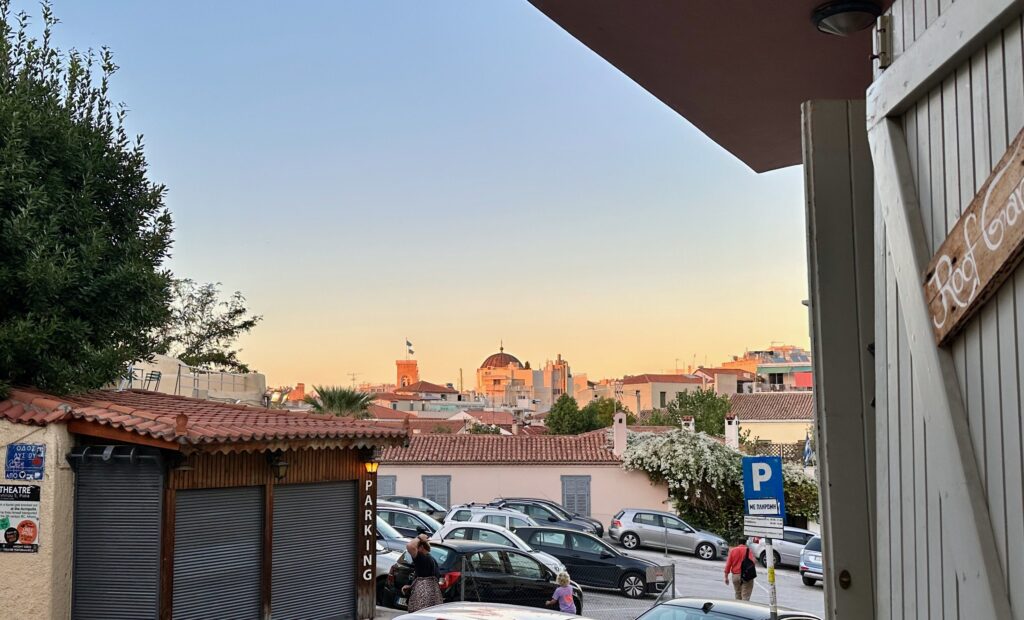
We arrived in Athens in the late afternoon, just in time to catch the city glowing in soft golden hour tones. From our spot near the Plaka, the rooftops and domes painted a picture of laid-back charm and Mediterranean color.
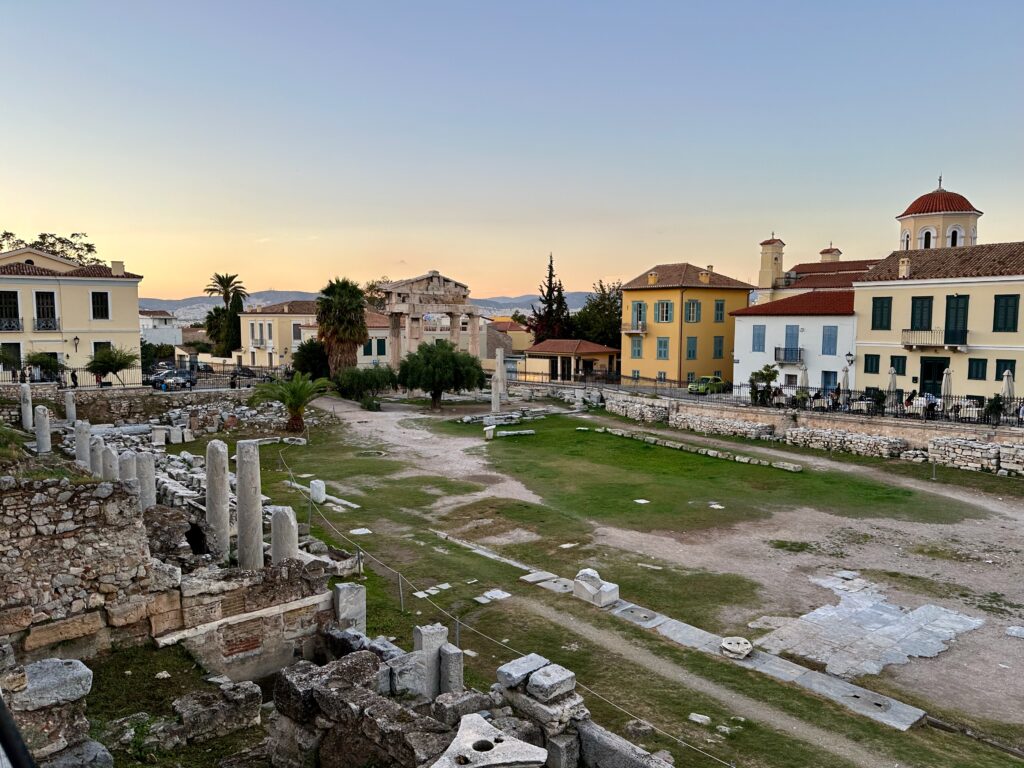
With no big plans yet, we wandered toward the Roman Agora. Ancient columns and ruins stood quietly beneath the fading sky, surrounded by vibrant neoclassical homes.

We passed under the Gate of Athena Archegetis, an entranceway older than most cities — beautifully silhouetted against a fiery sunset.

Dinner in the Plaka that evening was a mix of candlelight, grilled meats, and the faint hum of bouzouki music from a nearby courtyard. The Tower of the Winds and the Acropolis glowing in the distance made for an unforgettable walk back.
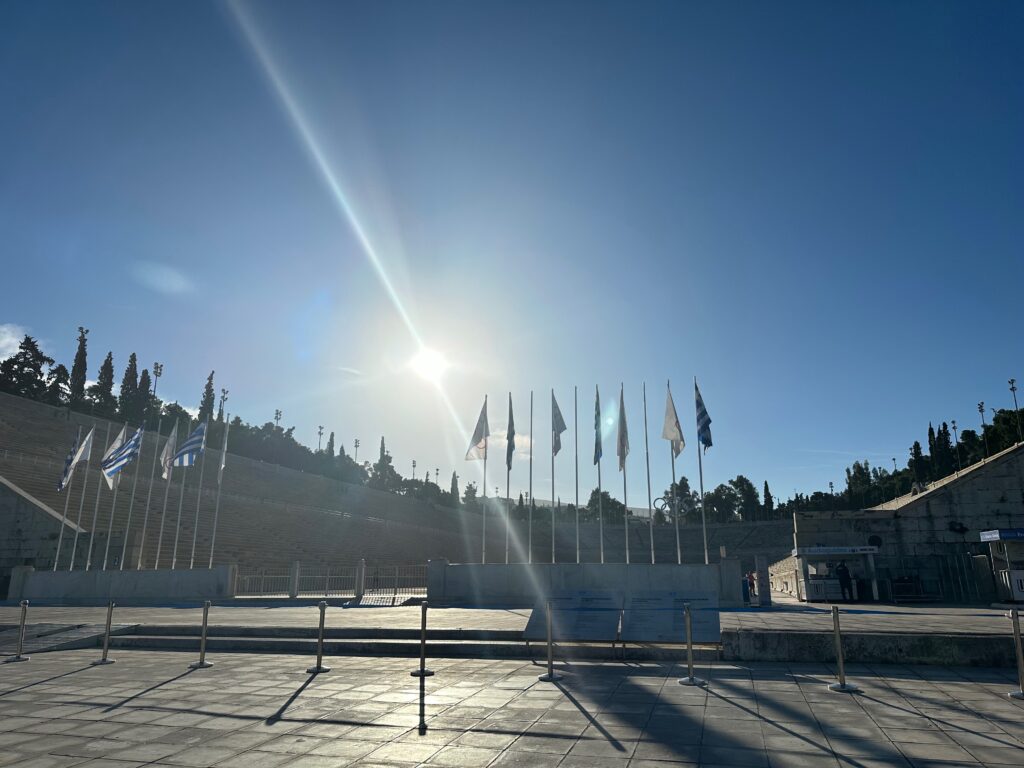
We kicked things off with a walk to the Panathenaic Stadium, birthplace of the modern Olympics. It’s all marble, all grandeur, and still in use today for ceremonial events.

From the Acropolis Museum terrace, we got our first up-close look at the Parthenon. It’s striking even from a distance — sitting above the city like a crown.

Our guided Acropolis tour began with a view into the Odeon of Herodes Atticus. Built in 161 AD and still in use, it’s a reminder that Athens doesn’t just preserve history — it still lives in it.

And then, the Parthenon itself — our high point in every sense. Crowds milled around it, but the structure’s sheer size and grace held everyone’s quiet attention.
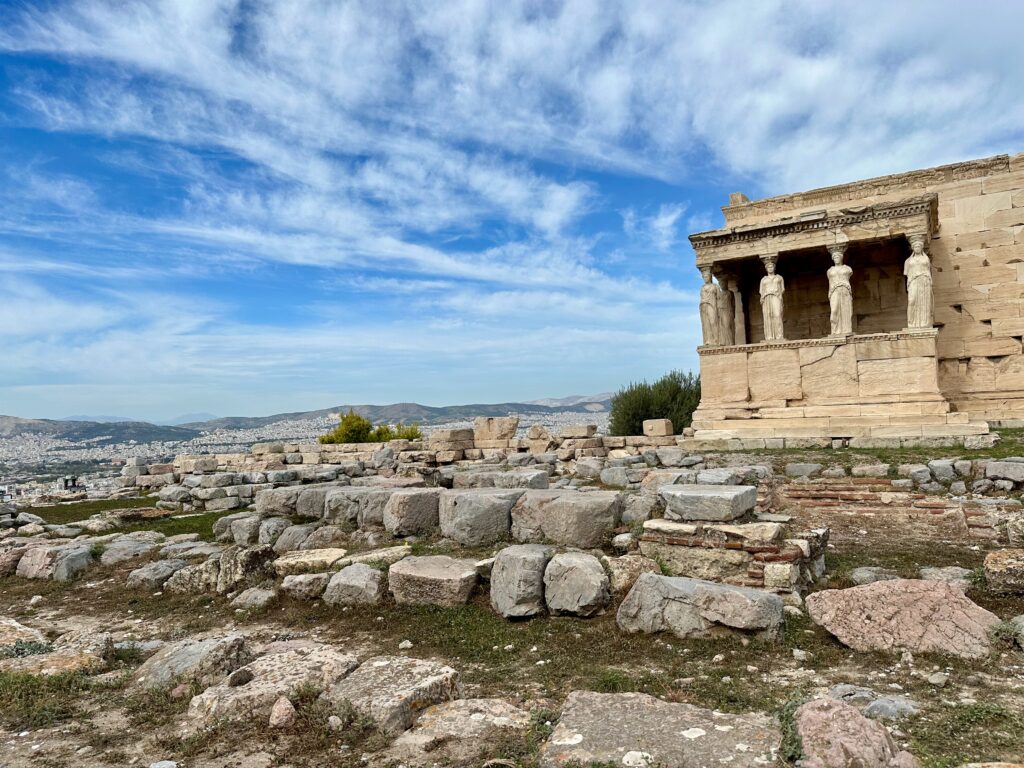
Nearby, the Erechtheion with its caryatid porch offered a more delicate, sculptural counterpoint to the Parthenon’s might.
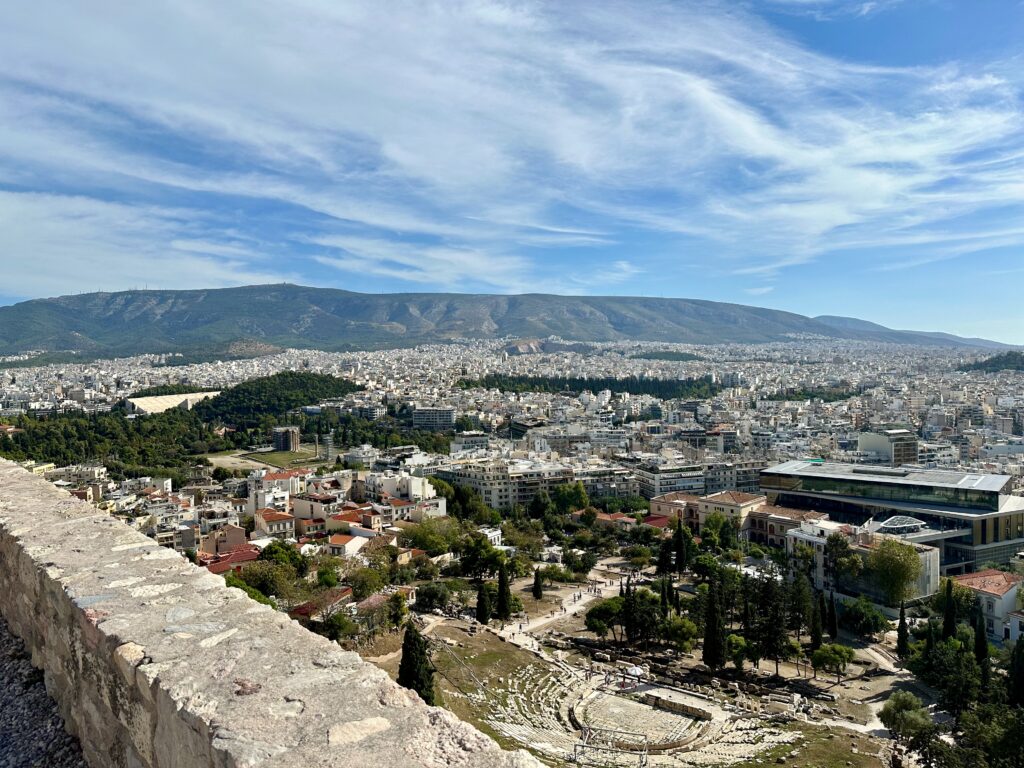
A wider view revealed just how much Athens sprawls — from the ruins below to the hills and neighborhoods stretching all the way to the sea.
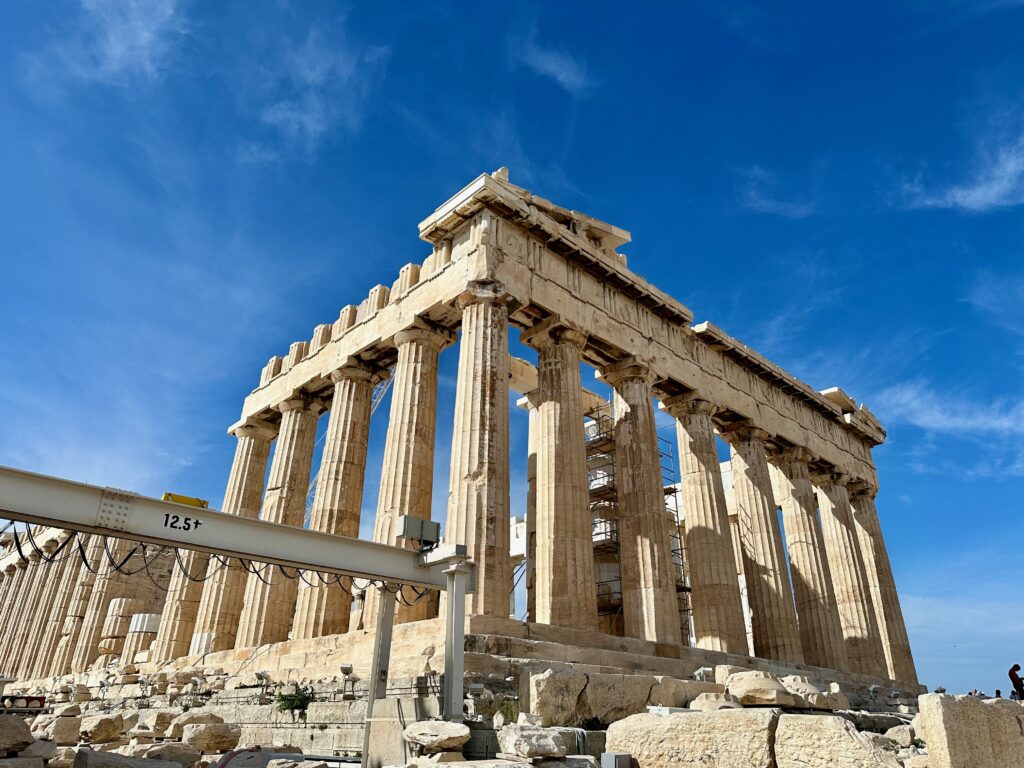
Descending through the Propylaea, the entrance gates to the Acropolis, we paused for one last view before heading back into the modern city.
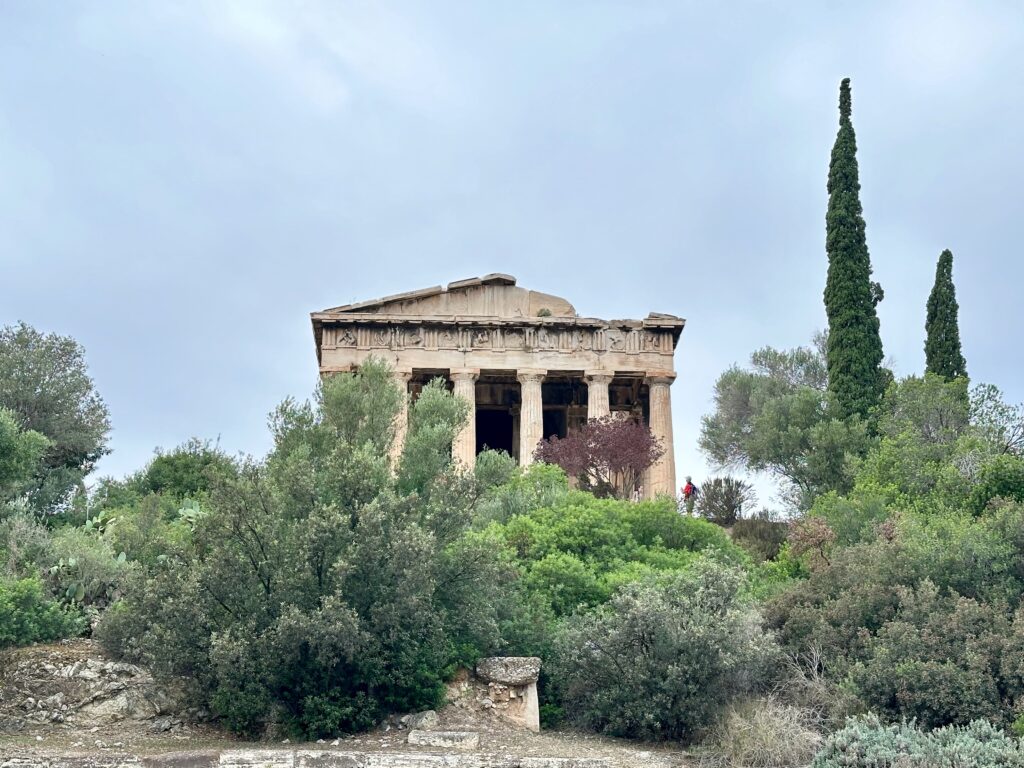
In the Ancient Agora, the Temple of Hephaestus surprised us — it’s one of the best-preserved temples in all of Greece, hidden among trees and wild herbs.
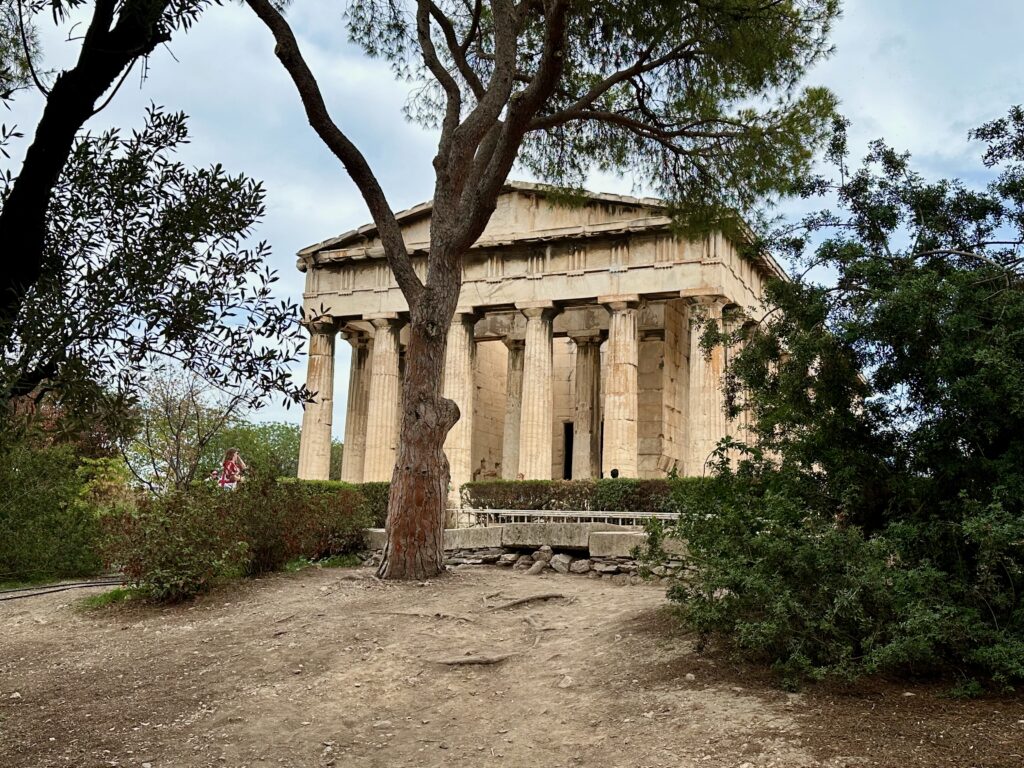
From another angle, it felt tucked away like a secret. Quiet, peaceful, and somehow still intact after millennia.
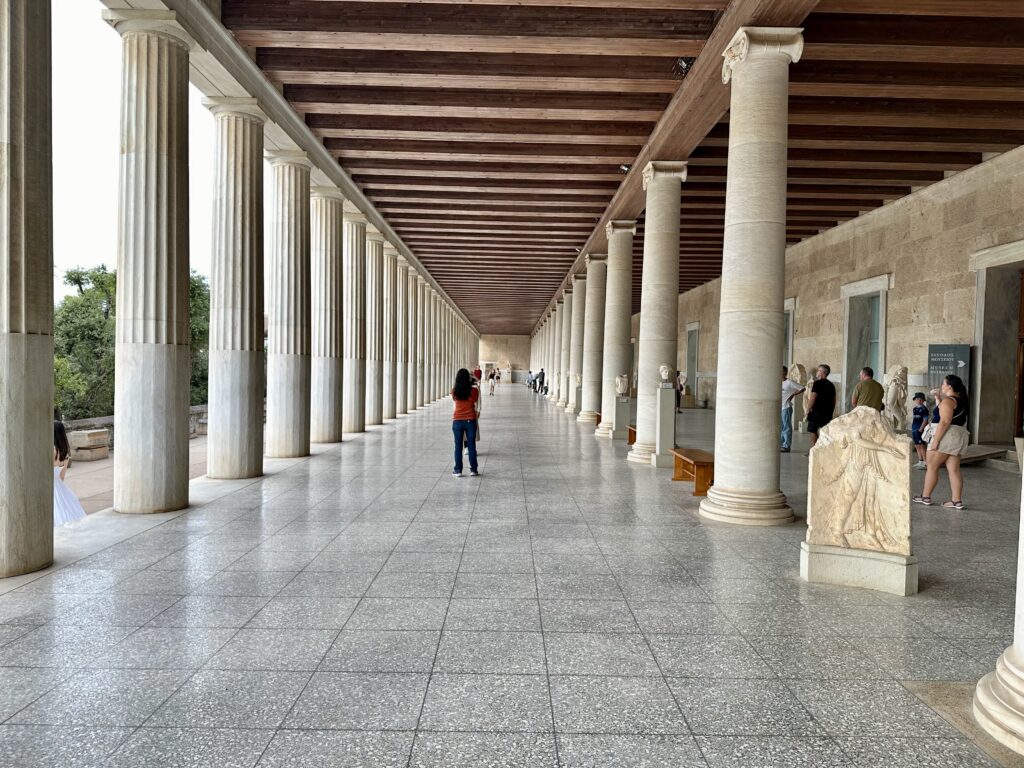
We stopped inside the Stoa of Attalos, a reconstructed colonnade housing artifacts and statues. Its symmetry and calm were a welcome break from the sun.
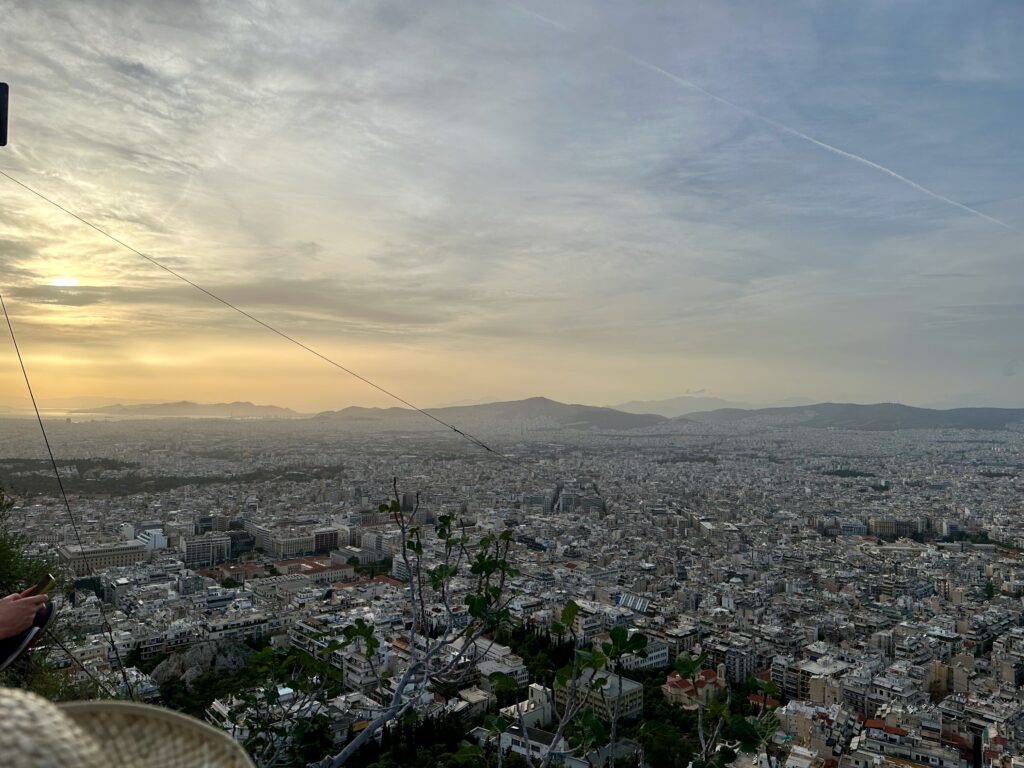
That evening, we took the funicular up Mount Lycabettus and watched the sun set over the Aegean. The haze turned everything golden and slow.

As twilight faded, city lights blinked on across the hills. From this height, Athens felt endless — an ancient metropolis still pulsing with life.
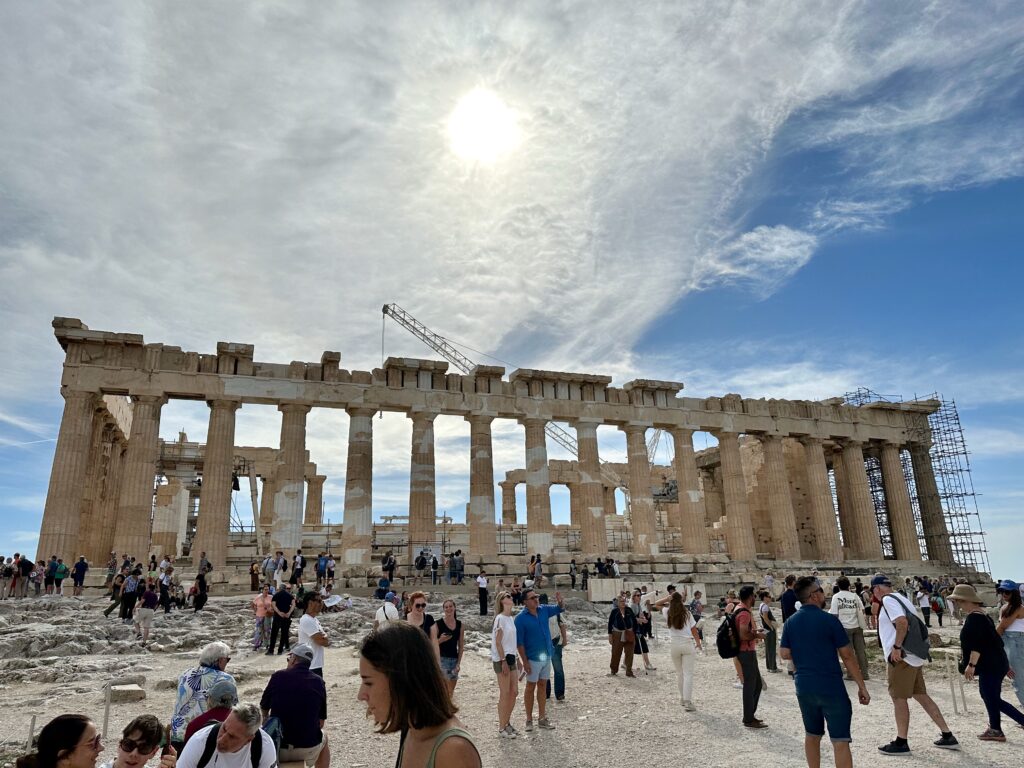
Athens doesn’t just show you its history — it immerses you in it. In two days, we went from dining under temple shadows to standing atop the city’s most legendary hill. It’s a place where time folds in on itself — where Socrates, street cats, scaffolding, and souvlaki all belong in the same frame.


